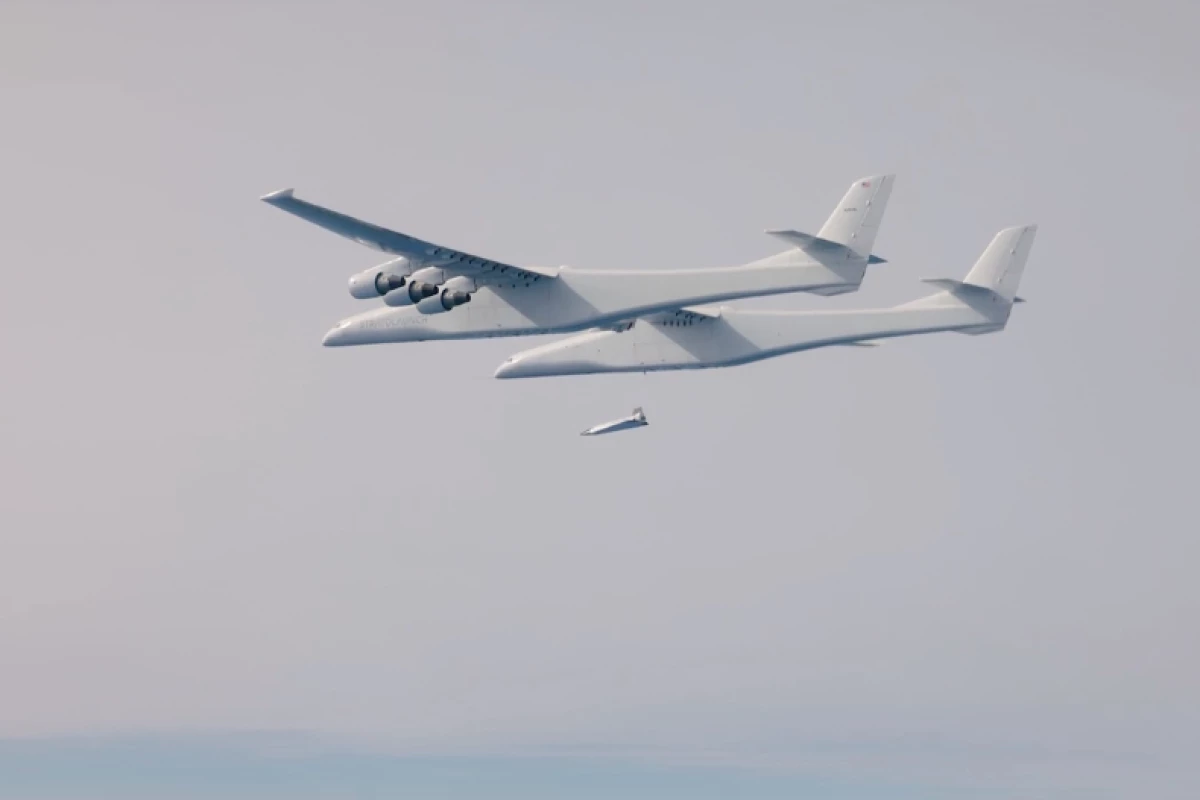Stratolaunch Systems, the company behind the world's largest aircraft, is making headlines again. The firm's Talon-A1 hypersonic test aircraft has successfully completed its first powered flight, which took place last weekend in Mojave, California.
For readers who may be unfamiliar with Stratolaunch, the US aerospace company originally set out to develop a unique air-launch-to-orbit system.
In a nutshell, the idea was that instead of being launched straight from the ground, a client's spacecraft would be mounted beneath a special launch aircraft, flown to a very high altitude, then released. The spacecraft would subsequently fire up its rocket engines to complete its journey into Earth's orbit.
It was envisioned that the system would be a less expensive and more efficient alternative to the fuel-hungry, single-use rockets which are typically used to take spacecraft from a launchpad on the ground all the way up to outer space (fighting Earth's gravity the whole time).
Stratolaunch also stated that turnaround time between launches would be much shorter than is currently possible, allowing for a larger number of launches within a given time period. The gigantic twin-fuselage launch aircraft that the company designed for its system is called the Roc.

Unveiled seven years ago, it weighs approximately 500,000 lb (226,000 kg), can carry payloads up to 550,000 lb (249,476 kg) and has a record-breaking wingspan of 385 ft (117 m). It's powered by a whopping six Boeing 747 engines.
After a change in company ownership, however, it was decided that the Roc would instead be used to release Stratolaunch's uncrewed Talon-A series of aircraft, which would fly at speeds of over Mach 5 before autonomously landing themselves on a runway. They would be used mainly to conduct research on different aspects of hypersonic flight.
In May of 2023, Stratolaunch used the Roc to successfully carry and release an unpowered version of the Talon-A (called the TA-0), which proceeded to glide to a landing. Last December a powered Talon-A (the TA-1) was carried to altitude by the Roc, but it was purposely neither released nor fired up.
And that brings us to last weekend's flight.

On Saturday (Mar. 9) at the Mojave Air and Space Port in California, the Roc carried the remotely controlled TA-1 to altitude and safely released it, whereafter the TA-1 ignited its rocket engine, accelerated and climbed in altitude, then performed a controlled water landing.
"Today was a great day for the Stratolaunch team," said CEO Dr. Zachary Krevor. "While I can't share the specific altitude and speed TA-1 reached due to proprietary agreements with our customers, we are pleased to share that in addition to meeting all primary and customer objectives of the flight, we reached high supersonic speeds approaching Mach 5 and collected a great amount of data."
Mach 5 and over is considered hypersonic.
Krevor added that the data will be utilized in the planning of the first flight of the TA-1's successor, the TA-2, which should take place later this year. The company has also started work on an additional launch aircraft, the Spirit of Mojave, which is a modified Boeing 747-400.
You can see the TA-1 being released and taking flight, in the video below.
Source: Stratolaunch Systems







